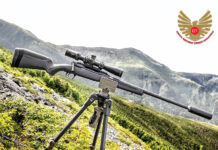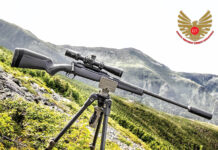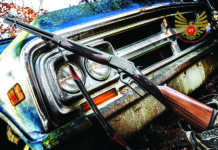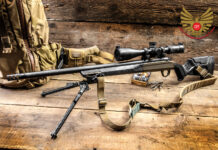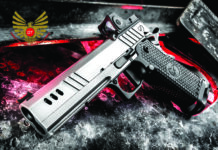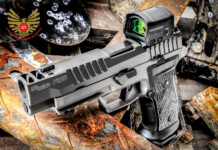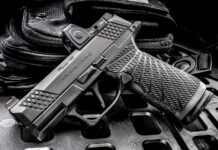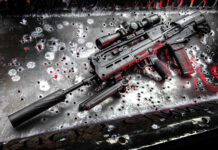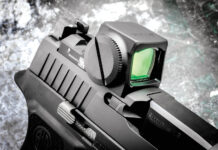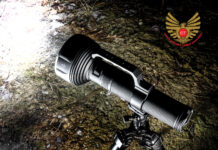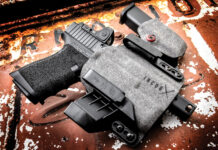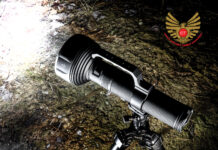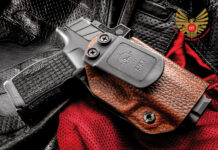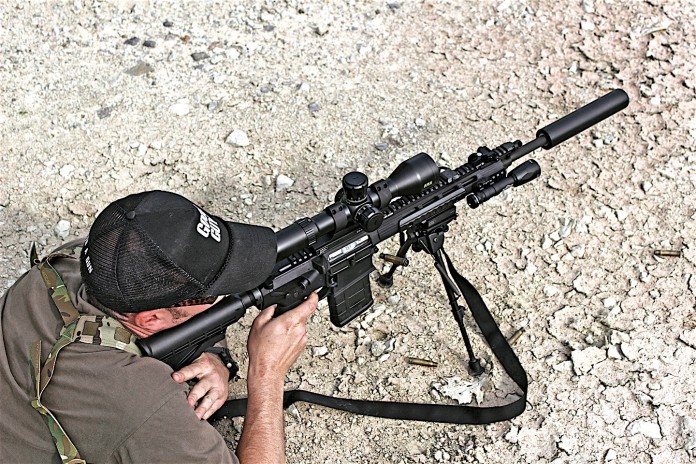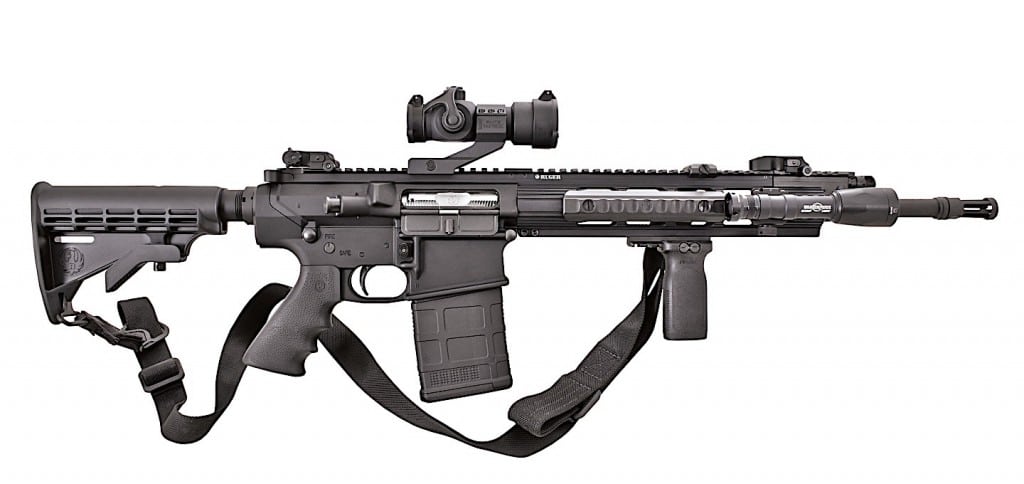Few people would argue that the AR-15 platform, in its myriad variations, has become the most popular rifle of any kind among American shooters a distinction never achieved by the “original” AR.
The AR-10—designed by Eugene Stoner in 1955 as a contender in the race to replace the M1 Garand as the standard U. S. service rifle—was a 7.62 NATO chambered, selective-fire battle rifle employing a novel (but not unprecedented) direct-gas-impingement operating system. It was adopted in limited numbers by the military forces of Portugal, Burma, Italy, Guatemala and Sudan, but lost out to the gas-piston operated M14 on the American side. And it never won in the U. S. civilian market either . . . until recently, at least.
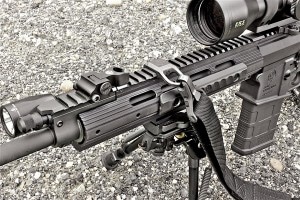
grip panels. A Magpul RSA sling mount and MS3 sling are pictured.
Introduced last fall just ahead of its first public appearance at the 2014 SHOT Show, the new Ruger SR-762 ($2,269) is the 7.62 NATO chambered follow-on to the company’s highly successful, gas-piston operated SR-556. To say that the SR-762 is a 7.62 NATO version of the SR-556 is not literally true, but it’s not far off either. The SR-762 employs the same gas-piston operating system Ruger designed for the SR-556, with some necessary modifications to handle the larger cartridge.

